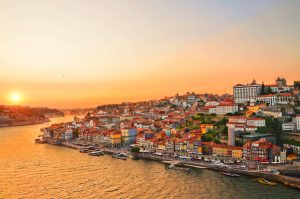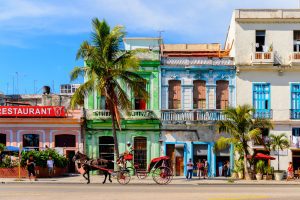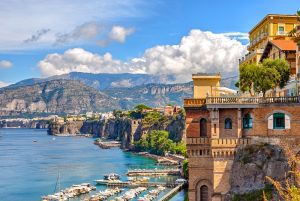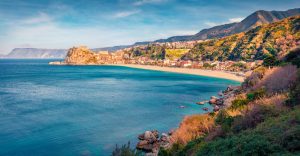Portugal, located to the west of Spain, is mainland Europe’s westernmost country. This small nation features delicious cuisine, stunning geography, and complex and beautiful architecture.
Cape Roca, known in Portuguese as Cabo da Roca, is the westernmost location within the Sintra Mountain Region, Portugal’s landmass, Eurasia, and Europe as a whole.
It’s situated in the section of Sintra close to Azóia on the other side of Lisbon from the city center.
Table of Contents
What makes Cape Roca popular?
Affluent and expensive Sintra in Portugal is one of Europe’s most attractive places to reside. It’s a popular choice for ex-pats from around the world and is consistently ranked among the best places to live in Portugal.
Sintra is a popular tourist destination because of its stunning scenery, and Cape Roca is located right in the middle of it. There are numerous historic mansions and castles in the area, as well as lovely beaches, gardens, and sanctuaries.
Sintra is a suburb of Lisbon that is part of the Greater Lisbon area and has a population of 377,835 and is 123.26 square miles in size.
Sintra is also one of Portugal’s most industrialized and populous cities.
In the Sintra-Cascais Nature Park, you’ll find the Sintra Mountains, and Sintra was named a UNESCO World Heritage Site because of its royal palaces, gardens, villas, medieval estates, and Romanticist architecture.
What is the distance between Cape Roca and Sintra?
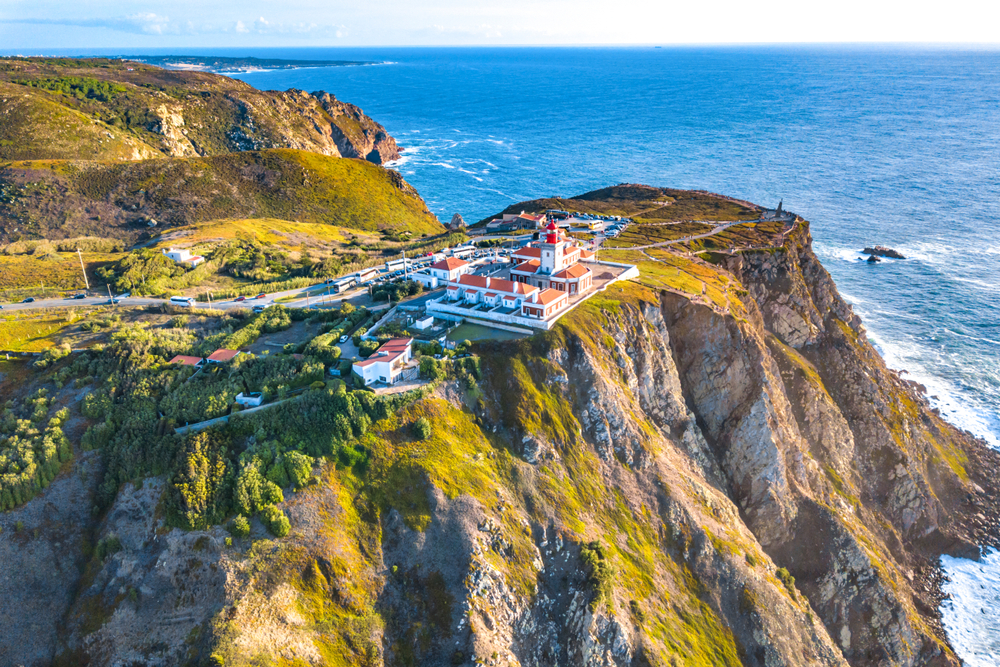
Sintra is 18 kilometers west; Cascais is 15 kilometers north; Lisbon is 40 kilometers west.
If you’re coming from Cascais or Lisbon, the quickest way to get there is to take the picturesque N247 highway. The remaining 2.5 kilometers from the village are well marked on the road.
How do you get to Cabo da Rocs if not by hiking?
It’s easy to reach Cabo da Roca from Sintra and Cascais through frequent bus service. The 403 bus service is provided by Scotturb and costs €4.30 for a single ticket.
Cabo da Roca can be reached in 37 minutes by bus from Sintra train station.
The bus from Cascais to Lisbon departs from the Cascaisvila retail center’s bus station and tends to take 22 minutes to arrive. Although there are at least two departures every hour on weekdays, the number of departures fluctuates throughout the weekend and seasonally.
For more information on transportation in these areas, check out our later section on the best means of transport.
Is Cape Roca Populated?
No! Cabo da Roca is Europe’s most craggy and wild headland. It was thought that these windy cliffs and desolate landmasses marked the end of civilization as we knew it as far back as the 14th century.
Cabo da Roca’s remoteness is reinforced by the lack of development in the area, which only includes a lighthouse, a café, and a souvenir shop. The Cabo da Roca’s stunning and wind-whipped scenery is a major lure for nature lovers, making it a great vacation destination.
A popular stop on guided trips connecting Sintra and Cascais, Cabo da Roca is a great place to dodge the crowds. If you’re looking for an even greater escape from people, pristine cove coastlines like Praia da Ursa and Praia da Adraga can be reached via strenuous walking paths that trace historic coastal paths.
When is the best time to visit Cabo da Roca?

Visit the Cabo da Roca at sunset to see the setting sun’s golden beams on the water. Although it may be a difficult hike to reach the best viewpoint, the stunning sunset is a worthy reward.
Do you pay to enter Cabo da Roca?
Cabo do Roca does not charge an entry fee or parking fee. It takes about 15–30 minutes for most tourists to see the cliffs, memorial, and lighthouse, all in one visit.
Coach tours, which stop briefly on their journey between Sintra and Cascais, typically urge visitors to have a hurried experience.
If you’re into hiking or just taking in the beauty of the outdoors, plan on staying for at least a few days. This is an unprotected headland, so be prepared for chilly gusts and temperatures that are substantially lower than those seen in Cascais and Sintra.
Where can you get memorabilia at Cabo da Roca?
Customized and handcrafted certificates attesting to your visit to Cabo da Roca are available in the gift shop.
Since Cabo da Roca’s cliffs are steep and treacherous, as well as prone to severe gusts, never venture beyond the perimeter gates in search of that perfect picture.
Is it safe to hike in Cabo da Roca?
Yes! However, the railroad is rocky and windy, so keep close to the fence. Various paths lead from Cabo da Roca, but they all lead either north or south.
It is only a short distance away from Praia da Ursa shore (1km) and the Praia da Adraga beach (2km) along well-worn footpaths. If you’re looking for an unspoiled beach in the Serra de Sintra area that is both beautiful and peaceful, look no further than Praia da Ursa.
Praia Grande and Praia das Maçs, two beautiful beach villages in the north, are also well worth a visit.
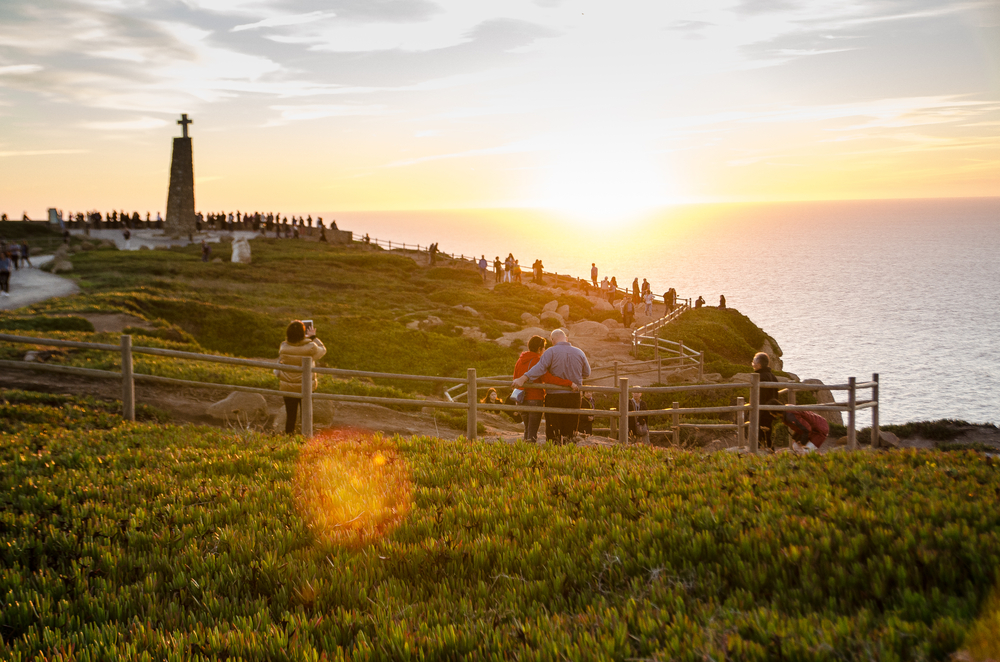
South of Praia de Assentiz (800m) and Praia do Louriçal (1km), the southern route continues to follow slopes before the main route swings inward and very minor pathways extend along the shoreline.
Beachgoers who become stuck at the base of the cliffs have to use the Praia do Louriçal rope access instead of the more accessible Praia de Assentiz or Praia do Louriçal.
If you’re planning on going for a walk, you should head north.
Which Cabo da Roca attraction stands out above the rest?
One of the most popular attractions in this area is the lighthouse. Though it was completed in 1772, the current Cabo da Roca lighthouse owes much of its appearance to an 1842 renovation. The lighthouse is 150 meters above sea level, and its 1,000-watt light can be seen 46 kilometers away.
Another interesting feature is a stone landmark that commemorates the Cabo da Roca Portugal cape. Luis Camoes (1524–1580), Portugal’s most celebrated poet, described the region as “Where the land stops and the water begins.” in his poem, which appears on the monument’s side.
Is there plant life at Cabo da Roca?
Most plant life can’t live here due to the constant winds, so what does exist must be low-lying and able to withstand the salinity. The dominating plant is the non-native Portuguese Hottentot fig (also known as the Ice-plant).
Can you venture to the Cabo da Roca beaches?
On foot, you may reach a few secluded beaches around the picturesque cliffs. Praia do Louriçal is on the left, and Praia da Ursa is on the right.
Pebble beach Praia do Louriçal is accessible through a walking trail from the area’s fortress.
There’s a rope to help you down the final portion of the trail because it’s steep. Despite a bit of a challenge, the payoff is an isolated sandy beach.
Make sure you have proper hiking shoes before you set out on the trails.
Is Sintra Natural Park a great place to go hiking?
If you want to make a day out of your hike in the Sintra Natural Park, head to Cabo da Roca.
We recommend strolling from Sintra to Cabo da Roca to see the sunset and a few of the city’s monuments, then taking a bus back. The walk between Sintra and Cabo da Roca takes about 4 hours, but you’ll see more of the area.
How do I travel to Cabo da Roca if I’m in Lisbon?
Take the train from Lisbon to Rossio, Oriente, or from Cais do Sodré to Cascais, then follow the instructions from there.

Purchasing a Zapping card from the ticket office/machine and charging it for €5 or €4 is a good idea for train tickets.
Instead of paying €2.25, you’ll just pay €1.90 with this card. In addition, the card can be used on any of Lisbon’s public transportation systems (boat, metro, bus, or railway).
What are the best means of transport between Cabo da Roca and Sintra?
Cabo do Roca is accessible via bus 403 from Sintra’s train station. Tickets cost €3.35 one-way and take 40 minutes.
You can pay the driver directly for the trip tickets. Additionally, for €15, you can get a one-day tourist pass that allows you to ride all of the Scotturb buses.
If you wish to combine a day excursion to Cabo da Roca with a tour of Sintra’s landmarks, this is an excellent option.
For €25, you can travel between Sintra and Cabo da Roca by cab in around 30 minutes.
What is the best way to travel between Cascais and Cabo Da Roca?
To leave the train station in Cascais, you must first go through the gates and then turn right. On your right, you’ll notice Cascais Villa, a shopping area with a bus terminus beneath it.
The 403 bus stop can be found there.
Traveling between Cascais and Cabo da Roca takes roughly 22 minutes, and the ticket from here costs €3.35. Between Cascais and Cabo da Roca taxis typically cost around €20 one-way (roundtrip).
Which spot in Portugal offers the best views?
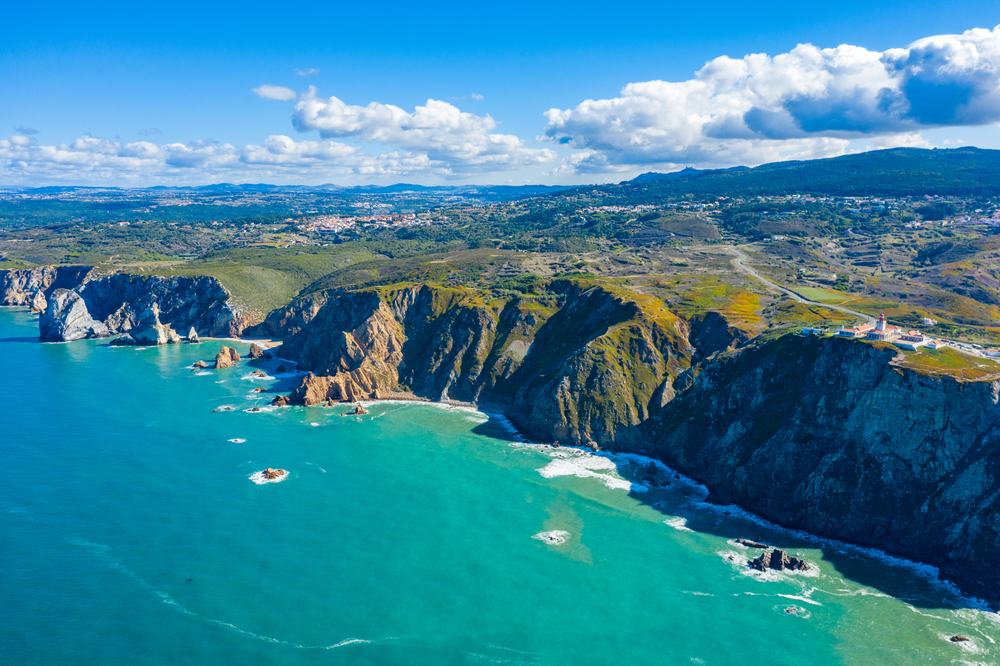
Some of the best viewing spots are between Cascais and Sintra and will require taking a more scenic route to get to.
From these vistas, tourists can easily see where Europe’s westernmost point plunges from the rocky coastline down to the tumultuous ocean below. The stunning view is peppered with impressive, 140-meter-high rocks that are characteristic of this area.


